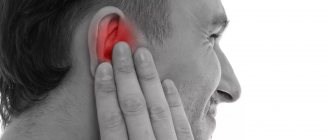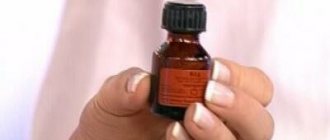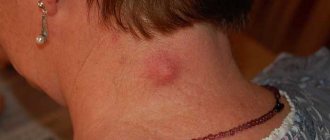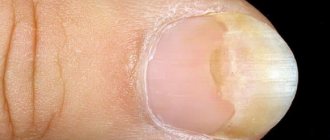Definition of sulfur plug, what it is
Earwax is an excessive buildup of earwax. It is formed by the ear glands to ensure the protective functions of the auditory organ. Sulfur varies in its density, composition and color.
When you move your jaw, the ear canal clears itself of it. If the ear glands malfunction, excess wax may be released, which will accumulate, forming a plug.
Depending on the color and density, ear plugs are divided into the following types:
Plasticine-like - plastic mass with a brown tint.
- pasty - soft yellow formation;
- a hard and very dark mass, firmly attached to the wall of the ear canal;
Epideromidal is a rocky and difficult to remove mass. Such a plug contains pus and sulfur with skin particles, which can cause inflammation of the auditory organ.
Excessive wax accumulation can cause hearing loss. Removing dry and epideromidal plugs is a rather difficult process, consisting of several stages.
Factors leading to plug formation
Earwax accumulation occurs due to reasons such as:
- Poor ear hygiene. Cleaning the ear with cotton swabs is dangerous for the health of this organ. Such sticks do not cleanse the ear canal of wax, but rather compact it. As a result, a sulfur plug is formed.
- The ear glands produce large amounts of wax. Because of this, the ear does not have time to clean itself, and it accumulates and hardens over time. Increased secretory activity can cause: eczema, dermatitis, sinusitis and chronic otitis.
- Increased viscosity of sulfur.
- Transmission of infectious diseases.
- High cholesterol.
- Using a hearing aid.
- The age of the person.
- Foreign object inside the ear.
- Water ingress.
- Frequent use of headphones.
Often, the accumulation of sulfur occurs due to improper hygiene behind the auditory organ.
What causes traffic jams?
There are a number of reasons that provoke the formation of sulfur plugs:
- Poor ear hygiene.
Inserting a cotton swab too deeply to clean the ear canal pushes wax masses deeper and compacts them. Some people, instead of cotton swabs, use objects that are not at all suitable for cleaning ears - knitting needles, toothpicks and other sharp objects. They injure the skin of the ear canal along with the cilia of the epithelium, pushing the sulfur to the “exit”. As a result, the sulfur masses stand still and are compressed.
- Anatomical features of the hearing organ.
If a person has a very narrow or tortuous ear canal, it is difficult for wax to exit.
- Hypersecretion of sulfur glands.
Increased sulfur production is a common cause of sulfur plugs. So much sulfur is formed that the self-cleaning mechanism simply cannot cope. This condition may be congenital, or it may be a consequence of metabolic disorders in the body, skin diseases, or too frequent ear cleaning.
- Otitis.
Inflammatory processes in the organ of hearing lead to swelling of the ear canal. This creates a mechanical obstacle in the way of sulfur masses and complicates their natural exit.
- Prolonged contact with water.
When sulfur interacts with water, it swells and turns into a plug. Divers and swimmers often encounter this problem. Even a regular seaside vacation can be ruined if you have wax in your ear canal and you haven't treated it at home. Before traveling, it is recommended to make an appointment with an ENT specialist and examine the ear cavity for the presence of wax accumulations in it. If there is a plug, the doctor will be able to remove the wax plug from the ear, and your rest will not be overshadowed by unpleasant moments.
- Entry of a foreign body into the ear cavity.
When a foreign object enters the ear, an enhanced process of sulfur formation begins - this is how the body’s unique defense manifests itself. A lot of sulfur is formed, but it cannot get out, because there is an obstacle in its path - a foreign body.
- A large amount of hair in the ear canal.
Elderly people often face this problem. Excessive hair in the ear interferes with the natural release of wax.
- The indoor air is too dry.
If you stay in a room with low humidity for a long time, the sulfur dries out and turns into a plug.
- Unfavorable working conditions.
Too dusty and polluted air in the workplace becomes a frequent cause of the formation of sulfur plugs, for example, among miners or millers.
- Using earbuds and wearing a hearing aid.
Long-term use of these items irritates the skin of the ear canal and stimulates increased wax production. Using someone else's headphones can also lead to infection of a healthy ear and trigger an inflammatory process in it, which also provokes the formation of a plug.
Symptoms of wax plugs
The initial stage of the traffic jam is asymptomatic.
After some time, as the sulfur mass begins to thicken and harden, the following symptoms may indicate the presence of a plug:
- autophony;
- sudden hearing loss;
- noise in ears;
- headache;
- pain;
- congestion.
It is possible to conduct an examination of the ear canals on your own without visiting a medical facility. To inspect the ear, you need to pull the auricle down and to the side and carefully examine the ear canal. If there are yellow or brown lumps of sulfur, this indicates the formation of a plug.
When wax accumulation is located near the nerve endings of the eardrum, you may experience symptoms such as:
- nausea;
- vomit;
- frequent cough.
In isolated cases, diseases of the cardiovascular system may occur.
Methods and stages of getting rid of sulfur accumulation
Removal of wax plug is performed in 3 stages:
- The first stage is the mandatory softening of the sulfur mass. You should prepare a softening agent for the cork, pipette and cotton wool. The head should be tilted, the auricle should be pulled back and the product should be inserted into the ear. Then place a cotton swab in the ear canal.
- The second stage is washing the ear canal from wax. You will need 3% hydrogen peroxide and a syringe. Washing is carried out the next day. You need to lie down and turn your head with the affected ear up. The ear must be completely filled with the solution and held for 15 minutes.
- The third stage is complete cleansing of the ear canal from wax plug. This step can be performed with a shower hose without a nozzle, after turning on warm water. You should carefully direct a stream of water into the ear canal to begin rinsing. You should continue to do this until the wax plug is completely removed. If painful sensations appear, then rinsing should be stopped.
Contraindications, side effects from using the drug
Using peroxide is the most effective, safe option for getting rid of ear plugs. Despite a number of advantages of the drug, we should not forget about the presence of contraindications.
It is recommended to familiarize yourself with the prohibitions in advance - a simple precaution will prevent harm to the body and avoid unpleasant complications.
The main prohibition is increased sensitivity of the body, intolerance to the drug. With an individual negative reaction to elements of the drug, the risk of a number of side effects and serious irritations increases.
It is strictly forbidden to use the medicine for ear diseases. If, simultaneously with the blockage of the passages by sulfur, inflammatory processes occur and severe pain occurs, you will have to stop using the product.
The solution should not be used while using other medications that are instilled into the ear cavities. Peroxide can react with other compounds, which will result in unpleasant complications and manifestations that are dangerous for hearing.
The next contraindication is that infants should not use the solution. If a wax plug is noticeable in the baby’s ear cavity, seek the help of a specialist; it is strictly not recommended to try to cope with the formation on your own.
It is also not recommended to use the solution if the formation is too close to the eardrum. Peroxide can damage the fragile septum, resulting in complete hearing loss.
Pregnant women are recommended to undergo treatment using a pharmaceutical drug only after a visit to the doctor. The expectant mother’s body is capable of reacting negatively to even the most gentle compounds, hydrogen peroxide is no exception. The risk of serious irritation and unpleasant side reactions increases.
Side effects in the absence of prohibitions are extremely rare. In case of overdose, improper use of the drug, or hypersensitivity, there is a risk of unpleasant irritation signals.
Side effects include an unpleasant burning sensation, pain, and hearing impairment. The dermis is also capable of responding to treatment errors with rashes and changes in shade.
Regardless of the side effect, continuing treatment using peroxide solution is strictly prohibited. It is recommended to immediately stop the course and consult a doctor. Timely medical care will help preserve your hearing and avoid dangerous consequences.
Article for you:
How to brew and drink chamomile for a cold
Who is not recommended to remove the plug themselves?
Self-removal of wax plugs is prohibited for people:
- with mental and nervous disorders;
- children under 3 years old;
- suffering from diabetes mellitus;
- with eardrum injuries.
Ear cleansing and hydrogen peroxide
In order to understand how to get rid of a plug in the ear yourself, you need to prepare the necessary materials and remember the sequence of the procedure.
- prepare napkins;
- find a pipette or syringe;
- hydrogen peroxide.
Alternate steps:
- The bottle of medicine should be warmed with your palms to avoid pain, nausea or dizziness.
- Take a side lying position so that your ear is up.
- Add 3-5 drops of the product with a syringe or pipette.
- Do not get up for a third of an hour; the hissing of peroxide will immediately be heard.
- Clean the auditory organ from solution and particles of sulfur plug.
- Carry out similar actions with the second ear if necessary.
For the best effect, such manipulations should be carried out for 3-4 days, twice a day. If pain or discomfort appears during the first procedure, you must stop performing the procedure and visit an otolaryngologist.
Removal of wax plugs in children is carried out in the same way as in adults. The only condition is that hydrogen peroxide must be diluted by half with warm boiled water.
If this procedure does not give the expected result, it can be repeated. But you shouldn’t do it more than three times a week, so as not to cause internal irritation. Low effectiveness of home treatment indicates that the wax plug is tightly attached or deeply placed in the ear canal.
How to remove an ear plug with hydrogen peroxide in 20 minutes?
To quickly cure cough, bronchitis, pneumonia and strengthen the immune system, you just need...
Hydrogen peroxide in the ear from plugs is a disinfectant, antiseptic, which is used in the treatment of ENT diseases and the treatment of superficial wounds. The peroxide solution does not cause complications, side effects or allergic reactions.
H2O2 (hydrogen peroxide) is an oxidant; its molecule breaks down, forming atomic oxygen, and thereby exhibits increased biological activity. It is used in medicine and alternative methods of treating certain pathologies.
Application of peroxide
Hydrogen peroxide is known for its anti-inflammatory and antiseptic properties and is an indispensable medication for insect bites and varying degrees of skin damage.
With the formation of sulfur discharge and with varying degrees of otitis, doctors often prescribe cleaning the ears with hydrogen peroxide. It can be used for complications of the development of infectious inflammation, and also to quickly and effectively wash the ear from dust and dirt.
Despite the many beneficial functions of peroxide, the question of whether it is possible to clean ear plugs yourself at home remains relevant.
For external rinsing of the ear canal and auricle, only an aqueous solution of peroxide purchased at a pharmacy and heated to 37 ° C is used. The use of the drug for cleaning in children under the age of one year helps to reduce the protective properties of the external auditory canal, and can also provoke the introduction of any infection.
In fact, this seemingly universal remedy has several contraindications that you need to be aware of:
- If the eardrum is perforated, you should not instill or rinse your ears with peroxide;
- Eliminate the possibility of drug overdose;
- Use peroxide for purposes other than its intended purpose.
In other cases, it is advisable to use this medication, it is absolutely harmless and can remove wax plugs from the ear, and also help cleanse the ear canals from harmful elements.
Peroxide should be used for treatment carefully and exclusively as prescribed by an otolaryngologist.
The product is used in the following cases:
- Treatment of otitis media;
- For hygienic cleaning of ears;
- To clean earwax from ears;
- For treating and washing the auricle for wounds, scratches and injuries.
Hygienic cleaning must be carried out correctly. When washing your ears with hydrogen peroxide at home, you need to take into account one factor - if an adult’s skin is hypersensitive, a very careful application is necessary.
You should ensure that movements remain smooth, since sharp manipulations with ear sticks can compact the wax plug even deeper.
To do this you need:
- Moisten the gauze turunda with a pharmaceutical preparation of hydrogen peroxide (3%);
- Place in the ear canal for 5-8 minutes;
- Carefully remove the swollen wax with a cotton swab, but do not insert it into the ear canal.
As a rule, the ears are cleaned of wax formations in the ENT office, and only small wax plugs that are located fairly close to the ear canal are removed independently. If there is a plug, it is quite easy to see it; to do this, you need to slightly pull the ear.
The plasticine-like light mass is an accumulation of sulfur. You can remove the ear plug in 20 minutes by first softening it, after which it can be easily removed with hydrogen peroxide.
When there is an accumulation of sulfur of a dark color, as well as a dense consistency, it is not recommended to remove the plug yourself. It can fit tightly to the eardrum and can be easily damaged if moved carelessly. Such a plug should only be removed by a specialist using special tools.
To soften dense accumulations of wax in the ear, 3% hydrogen peroxide is heated and instilled into the ear for 3 days, 8-10 drops three times a day.
Swelling of the sulfur plug in a patient can lead to temporary hearing impairment, after which the otolaryngologist removes the accumulation of sulfur with a current of warm water, using a Janet syringe.
It is not recommended to independently treat the ears of adults and children with hydrogen peroxide for wax plugs, since only an examination by a specialist will detect perforation of the eardrum. There is also a risk of dry perforation of the membrane when hydrogen peroxide penetrates into the middle ear through it.
Important! You can remove wax plug yourself only if you are completely confident in the integrity of the membrane.
Description of the procedure
Hydrogen peroxide is poured into people's ears for congestion and wax accumulation in the following order:
- Drop 10 drops of 3% hydrogen peroxide into the ear;
- Take a position so that the solution is in the ear and does not flow out;
- After 8-10 minutes, you need to turn over to the other side, put a napkin under your ear and let the solution flow out.
When instilled into the ear, hydrogen peroxide characteristically hisses and foams, and this phenomenon is also accompanied by a sound similar to bursting air bubbles. First, abundant foam loosens the sulfur plug, after which it breaks. In about 10 minutes, a small cork breaks into pieces that come out with liquid.
When all the solution has flowed out, a cotton swab soaked in water is carefully inserted into the ear at the edge of the ear canal and the remaining wax is carefully removed. You should not try to clean out all the earwax, since intensive cleaning can only achieve the opposite effect and compact the remaining wax back into the ear canal. After cleaning, dry the ear with a napkin.
When it is not possible to remove the wax plug in a medical facility, you can remove it yourself at home. The main condition for the safe removal of wax from the ear canal is that you should not try to remove the wax plug mechanically.
It is not recommended to use sticks, hairpins, matches and other objects not intended for this purpose. Both adults and children should not be given peroxide to remove wax plugs without consulting an otolaryngologist.
Accumulations of dense sulfur mass are washed out for quite a long time - 5-7 days in a row, twice a day. As a rule, the patient’s hearing is restored by day 3. The treatment process can be somewhat accelerated if warming with dry heat is used.
If your ear is blocked due to purulent otitis, you need to carefully insert a gauze turunda, previously moistened with 3% hydrogen peroxide, into the external auditory canal. Turunda should be changed as it becomes saturated with purulent discharge.
If there is profuse suppuration, it is forbidden to clean the ear canal yourself; to do this, you must contact the ENT office. In this case, the otolaryngologist pours 3% hydrogen peroxide into the sore ear. When mixed with pus, the peroxide solution foams abundantly, after which the doctor thoroughly cleans the patient’s ear with a special suction.
Incisions, tears, crushes, abrasions are also treated with hydrogen peroxide (3% or 5%). The drug is able to quickly stop bleeding without causing pain.
The positive properties of hydrogen peroxide include thorough cleaning of wounds of any complexity and depth. The product quickly cleanses it of pus, while freeing it from dried crusts. After such treatment, the wound can be easily cleaned of contaminants.
In addition to effectively removing wax deposits, the product is successfully used in the treatment of many ear inflammations. For example, in case of insect bites, it disinfects wounds, and in case of otitis media, it eliminates bacteria and viruses.
However, peroxide cannot cope with acute and dangerous diseases of the ear canal, labyrinth or middle ear area, therefore, when the first signs of inflammation are detected, you should not self-medicate.
Conclusion
To avoid the formation of wax plugs, you need to properly care for your ears:
- Wash them with soap twice a week;
- If there is a slight accumulation of sulfur, you can remove the plug yourself using hydrogen peroxide;
- Removing wax from the ear with cotton swabs leads to even more plugs;
- Using matches, pins and hairpins can rupture the eardrum.
Hydrogen peroxide for earwax is the most affordable remedy that can be used at home; it can be found in every first aid kit, and its price has remained very affordable for many years.
Application of peroxide
How to soften a cork: folk remedies
If the sulfur plug is too dense, then it must be softened.
You need to inject a plug softening agent into your ear, such as:
- Soda solution. You need to dissolve 1 tsp in a bowl of warm water. baking soda.
- Lightly warmed vegetable oil or Vaseline oil, 5 drops in each ear.
- Hydrogen peroxide 3-5 drops twice a day.
The instilled softening liquid should be 36-39 degrees. The medicine should be dripped with a syringe or pipette for 2-3 days. After this time, it is necessary to wash the sulfur plug with warm water or saline solution. To relieve inflammation in the ear, you can additionally rinse it with a decoction of chamomile or calendula.
Softening cork using phytocandles
The effect of a phytocandle is that when the candle burns slowly, a vacuum is formed inside the ear, which pushes the sulfur mass out. This way you can remove the soft wax plug in the ear.
During the procedure, the inside of the ear is warmed up and filled with vapors of phytoncides and propolis, which relieve pain and relieve inflammation inside.
A gentle massage of the eardrum occurs due to reduced pressure and vibrating air due to the movement of the flame. Phytocandles have a relaxing effect (due to oil vapors) and a healing effect.
Such candles can only be used if there is little sulfur mass. For treatment you will need:
- matches;
- cream;
- bowl of water;
- cotton swabs and sticks;
- cloth napkin.
The auricle should be smeared with cream and lightly massaged. The ear must be covered with a cloth with a cut-out place for the candle. Next, the top of the phytocandle should be set on fire, and the bottom of the candle should be inserted into the ear canal. When the phytocandle burns down to the mark, it must be removed from the ear canal and extinguished in a bowl of water.
Then you need to remove the remaining wax with a cotton swab and put a cotton swab in for 15 minutes. The number of procedures is no more than 5-6 times a week, but if the form is acute - 1 procedure every 2-3 days.
You can make a medicinal candle yourself by following the instructions:
- Prepare a small, strong and smooth wooden cone.
- The cone must be lubricated with vegetable oil.
- Melt propolis in a water bath and add essential oil.
- Soak a piece of linen fabric with the prepared product.
- Wrap the wooden form with soaked cloth.
- Separate the frozen product from the wooden blank.
What is earwax and the reason for its formation?
Earwax is a lump of earwax that blocks the ear canal.
It is normal for earwax to form in the ears. It is necessary for the normal functioning of the hearing organ, as it moisturizes it and protects it from negative factors. In the absence of any violations, sulfur is removed spontaneously: during talking, chewing and other movements of the temporomandibular joint. There are a number of factors that contribute to the formation of ear plugs:
- narrow ear canal;
- elderly age;
- growth of dense hair in the ear canal area;
- work in dusty conditions;
- diseases - otitis media, dermatitis, eczema and others.
But the main reason for the appearance of wax plugs is the use of cotton swabs to clean the ears. The mechanism of plug formation is as follows: wax forms in the ear, when a cotton swab is inserted, it is pushed deep into the ear canal to the eardrum, and a plug is formed. Moreover, its size increases with each use of the sticks. Natural removal of sulfur in this case is impossible.
To prevent the occurrence of plugs, it is not recommended to frequently use cotton swabs and other objects (pins, hairpins) to clean the ears. They can only be used at the entrance to the ear canal, and insertion deeper is prohibited.
How to do a rinse
You should only rinse your ears when necessary. Frequent rinsing of the ear canals will flush out all the wax that is needed for protective functions. Due to the pressure of the supplied water, the integrity of the membrane may be damaged.
After making sure that there are no contraindications for rinsing the ears, you should first soften the wax mass in order to avoid injury to the membrane. Hydrogen peroxide is suitable for this procedure, but it can be replaced with distilled water or saline solution.
How to get rid of a plug in your ear
The liquid must be heated to 37 degrees, then proceed to rinse the ear canal in the following sequence:
- draw a warm solution into a syringe without a needle;
- place the syringe in the ear canal so that a stream of solution flows onto the upper wall of the ear canal;
- introduce liquid into the passage only under low pressure;
- When introducing liquid into the ear canal, you need to hold a cup to collect the spilling water.
If you follow the rules, rinsing your ears will be painless. During the procedure, the supplied liquid should be directed strictly to the wall of the ear canal.
How to use hydrogen peroxide to remove wax from your ear
You can clean your ears using other effective methods:
- Rinse with warm water. The procedure can be carried out by an ENT specialist or at home, but someone must help. Heat the liquid to a comfortable temperature, draw it into a large syringe without a needle. Below the ear, hold a container into which the water will flow. Inject some of the liquid into the ear canal to check its temperature. If it is not hot, inject all the water from the syringe with a strong stream. Under strong pressure, the plug will be washed out of the ear. Then use a cotton swab to remove any remaining water. This procedure is unpleasant, so it is not suitable for small children.
- Instillation of almond oil. It moisturizes the mucous membrane and softens sulfur plugs. Heat the oil to body temperature (you can warm it with your hands), then inject 5-7 drops into the ears, insert cotton wool. Repeat the procedure for 3-4 days.
- Soda solution. Add 1/2 tsp. baking soda into a glass of warm water. Draw the resulting solution into a syringe without a needle and rinse the ear from it. Perform the procedure so that the pressure is not directed to the eardrum, but flows down the wall of the ear canal. Repeat several times until all the plug is removed.
- Ear candles. They can be purchased at the pharmacy and are made of wax. You need to insert a candle into your ear and light it. It has a special limiter that prevents wax from getting on the skin. Heat softens the sulfur so that the plug can be easily removed.
- Using special drops (A-Cerumen, Remo-Vax, etc.). They dissolve the plug, making it easier to remove. The drops must be warmed to body temperature in your hand or in a water bath. Lie on your side and drip liquid along the wall of the ear canal. Do not drip the product into the center of the ear canal, as an air pocket may form. After 5 minutes, tilt your head so that the rest of the solution flows out along with the softened particles of the cork. Rinse your ear with warm water.
If an ear plug causes discomfort, is accompanied by partial hearing loss or pain, you should consult a doctor - such symptoms may indicate various ear pathologies, and self-medication can be hazardous to health.
Every healthy person has a small amount of wax in their ears. It is secreted by the earwax glands and serves to protect the ear canal and eardrum from bacteria and dust.
The spent wax, along with particles of fat and epithelium, gradually moves towards the exit of the ear, and can be easily removed by simply washing the ears during weekly water procedures.
But sometimes the well-coordinated mechanism of self-cleaning of the ear fails. Earwax plugs appear in the ears, which can cause ear pain, hearing loss, and even often disturbing headaches.
Many people have heard advice from friends to use hydrogen peroxide in the ear for ear plugs. Doctors are often asked questions about how to remove a plug from the ear with hydrogen peroxide, how safe and effective this remedy is. In this publication we will try to answer these questions.
It is a hardened secretion of the sulfur glands, mixed with sebum, particles of epithelium, and dust. The cause of its occurrence is often cleaning the ears with cotton swabs, during which the remaining wax is pushed deeper and compacted.
The occurrence of a plug can be caused by excessive hair growth in the ears, exposure to a dusty environment, too thick a consistency of earwax, the use of a hearing aid, or the anatomical features of the structure of the ear canal.
Increased wax production may prompt thorough and frequent ear cleaning.
Constant irritation of the skin in the ear leads to increased activity of the sulfur glands. Using cotton swabs causes wax to move deeper into the ear and gradually clog it. The cork may not show itself in any way and cause discomfort only after taking a bath or swimming.
It swells with water and completely blocks the ear canal.
To answer the question, let's figure out how it affects the fabric and the cork itself. Sulfur does not dissolve in water, so simple rinsing is not always effective to remove the blockage, especially if it has formed a long time ago or is very dense. For successful removal, you must first soften the ear plug.
Hydrogen peroxide is used for disinfection for various injuries with skin damage. It destroys almost all types of bacteria and fungi.
After instillation into the ear and contact of peroxide with the plug, active oxygen is released with the formation of foam, which acts on it, helping to soften and clean the external auditory canal.
Pharmacies sell a 3% solution of hydrogen peroxide. This is a fairly low concentration, which is intended for external use and does not pose a danger to the ear canal. It does not cause a burning sensation upon contact with the skin. The skin remains intact, the person only feels a slight tingling sensation.
If there is a plug in your ear, hydrogen peroxide will help get rid of it without visiting the clinic. To do this, you need to buy a 3% solution, which does not need to be further diluted.
To have it removed in a doctor’s office, you will have to spend quite a lot of time making an appointment, traveling, and waiting in line.
You can avoid a grueling trip to the clinic if you use hydrogen peroxide in the ear for children and adults at home.
The procedure is not at all complicated; any adequate adult can easily cope with it and almost always get the desired result. If you don't know how to remove wax with hydrogen peroxide, follow the instructions below:
- Fill a small pipette with a 3% hydrogen peroxide solution, preheated to a temperature of 35°C-37°C.
- Lay the person on their side so that the affected ear is on top
- Place 5-7 drops from a pipette into your ear
- Ask the patient to lie down for 10-15 minutes
- Raise your head so that the liquid can flow freely
- Use a napkin to remove softened wax leaking from the ear.
- If necessary, repeat similar steps with the other ear.
- Rinse both ears with warm water in the bathroom
You can clean your ears with a cotton swab only from the outside, without trying to penetrate into the depths. If a blockage has already formed, you will only push it deeper. Under no circumstances should you use matches, pins or other similar things to remove it.
About 70% of calls for help for eardrum damage occur due to attempts to clean the ear with similar objects. Even minor damage subsequently leads to inflammatory diseases and, as a result, hearing loss. If you don't have time to visit a clinic, you can safely remove ear plugs at home using hydrogen peroxide.
Sometimes, after the first instillation, hardened wax softens and it comes out of the ear on its own. But usually one procedure is not enough to get rid of it. It is necessary to instill peroxide into the ear when there is a plug once a day, 3-5 drops for 5-7 days.
These problems can be avoided by regularly washing your ears with warm water and soap.
If hydrogen peroxide did not help to remove the wax plug, do not try to remove it with sharp objects yourself, and do not ask someone close to you to do this.
It is necessary to consult a doctor so that he can examine the ears, clarify the diagnosis if necessary, prescribe additional drops in the ears, or remove it using medical instruments.
Mechanical removal of wax plug by a doctor is a simple and absolutely painless procedure.
How to determine that there is a plug of wax in the ear and what to do next, you can learn from the following video.
The head must be turned so that fluid does not flow out of the ear. It is more convenient to carry out the procedure while lying down.
The solution is pipetted into the ear canal. For an adult, 10-15 drops in one ear are enough. Hissing and foam formation are signs of sulfur dissolution, and small clots of sulfur may be released to the surface along with the foam. The process lasts about 10 minutes. Then the foam should be carefully removed, the auricle should be wiped and the ear should be left alone.
If necessary, the procedure is carried out for several days in a row (but no more than a week), or twice a day. Usually, after 3-5 days, even a dense plug completely dissolves and comes out, hearing improves and is completely normalized. In order for the ear canal to dry well, the ear is warmed up with dry heat for 10-15 minutes.
If it is not possible to carry out manipulations several times, you can try to wash the cork immediately after one procedure with peroxide.
To do this, you need to wait 10 minutes until the wax softens and turn your head with the ear being treated downward. Inject warm water into the ear using a syringe without a needle or a small enema (200 ml).
At the same time, there is no need to use strong water pressure! Direct the stream of water not deep into the ear canal, but onto its back wall. At medium pressure, water will flow into the ear and immediately pour out, washing away any remaining wax. You need to place a small basin or bowl under your ear.
Washing out wax plug
To wash out the wax plug, you need to prepare:
- 20 mg syringe or rubber bulb;
- solution for washing wax out of the ear;
- basin or bowl.
You can wash it with a special solution from the pharmacy, saline solution, or prepare it yourself from 0.5 teaspoon of salt and soda, diluted in a bowl of warm water.
- You need to fix your head with your ear up.
- Take 15 ml of solution into a bulb or syringe without a needle and inject it into the ear with a strong stream.
- The solution must be left inside the ear for 5-7 minutes so that the medicine has time to act on the wax.
- Lower your head to the other side so that all the solution pours out.
- The procedure must be repeated with regular warm water, holding your head straight so that the infused water flows out immediately. This way the water will wash away the remaining sulfur mass.
The ears can be washed without preliminary preparation if the mass is soft. If the sulfur plug is dry and hard, then it must be softened.
Use of medications
How to get rid of a plug in the ear using medications:
- Remo-vax. The basis of the product is mink oil. The medicine is available in the form of drops and spray. Safe for use by children. The drug should not be used if there is acute ear pain, inflammation, or defects in the eardrum. You need to drop 15 drops of the medicine inside the ear and wait 20 minutes, then remove the liquid and remove any remaining wax. Treatment should be carried out for at least 5 days if the sulfur is hard and dense. In order to prevent excessive accumulation of sulfur, you need to use Remo-vac 2 times a month.
- A-Cerumen. A preparation for the rapid dissolution of accumulated sulfur masses. Allowed for use by children over 2 years of age. Often used to prevent excessive accumulation of wax in the ears. It is prohibited to use the drug for inflammation in the ear canal and perforation of the eardrum. The medicine should be injected into the ear canal and left for 1 minute, then the medicine should be removed along with the wax plug.
- Hydrogen peroxide. To know how to get rid of a plug, you need to drop 5-10 drops of the product into your ear with a syringe or pipette and leave for 10 minutes. When the medicine reacts with wax, it may foam and hiss. After the end of time, the product must be removed from the ear and dried with a cotton swab.
- Sodoglycerin drops. They are made to order at the pharmacy. It is necessary to introduce 5-10 drops of the medicine with a pipette or syringe into the ear canal and leave for 15 minutes. After some time, you need to remove the liquid with residual sulfur.
The mechanism of action of hydrogen peroxide
Hydrogen peroxide destroys cell membranes by attracting electrons. The bacteria contain the enzyme catalase, which reacts with the peroxide and begins to foam. After introduction into the ear cavity, the wax begins to slowly dissolve. A small amount of foam may form during this process.
The sulfur does not dissolve completely, but it becomes soft. This allows you to painlessly remove it from the ear cavity. For cleaning, you can use cotton wool - you need to make a turunda out of it and insert it into the ear canal, after which it will absorb the discharge.
Peroxide can also be used to disinfect the outer ear and in the treatment of various diseases. After its use, hearing improves, as the organ is cleansed of accumulated sulfur.
Features of the treatment of wax plugs in children
Particular attention should be paid to medications for treating a child from this formation. The medicine must have the safest possible composition so as not to cause allergic reactions in the child.
To rid a child of wax plugs, medications are most often used. It is not recommended to use traditional medicine in this case.
There are special medications for children. They are gentle on the child’s ears, soften the wax mass and suppress hypersecretion of earwax.
In order to get rid of ear congestion in children, the following drugs are most often used:
- "Rivanolin";
- "A-Cerumen";
- "Furacilin".
When injecting the drug into the auricle, it is necessary to pull it down. Place the nozzle of the bottle inside the ear and inject the required amount of medicine. After the drug has finished working, turn the child’s head so that the drug flows out along with the sulfur mass.
For prevention purposes, such actions are carried out twice every month. Experts insist that treatment of sulfur formations in children should be done in a hospital. This is what will help protect the child from negative consequences.
Improper treatment of formations in a child can lead to:
- inflammation of the skin of the auditory canal;
- bleeding from the ears;
- violation of the integrity of the membrane;
- inflammation of the eardrum.
Before you start getting rid of wax in your child's ear, you should visit a pediatric otolaryngologist. The specialist will select the right medications, indicate their dosage and advise on how to accurately carry out the treatment. Thus, the wrong concentration of the drug can provoke swelling and inflammation of the child’s membrane.
To protect yourself from the appearance of a plug in the ear, and not to think about how to get rid of it, you need to regularly carry out prevention with the help of pharmaceutical drugs specially purchased for this purpose.
Children should be taught proper ear hygiene from an early age. Knowing the causes of wax plugs, you can protect yourself and your loved ones from deteriorating health associated with the formation of plugs.











